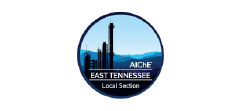TRACK 7 – Instrumentation & Mechanical Process Ingenuity
Click on seminar title below to read the abstract
Jim Hoffman, Regional Business Manager, Teikoku
VFDs are often used to operate pumps at reduced speeds to meet varying system requirements. While this holds true for canned motor pumps as well, the use of fluid-film / process-lubricated bearings and specially-wound motors allows for operation at higher speeds (up to 120Hz) without compromising equipment lifespan and actually increasing mechanical stability. Components such as mechanical seals and ball bearings found in other centrifugal pump technologies tend to have a reduced lifespan and be less reliable at higher operating speeds. High speed operation without mechanical sacrifice creates an opportunity for a smaller pump to be used and less energy to be consumed than a larger pump limited to ~60Hz speed. Physical footprint is reduced as well as overall cost in most cases.
What attendees will learn:
- How canned motor pump operating principles allow high speed operation without mechanical
sacrifice. - How the relationship between rotational speed and fluid film integrity affects stability at increased
speeds. - How rotational speed relates to performance parameters such as flow, head and power consumption
as well as physical pump size / number of stages. - How the relationship between voltage, current and operating speed is changed by introducing a
special motor winding. - Which types of applications are best suited for high-speed centrifugal pumps.
John Richmond, Senior Manager Sales, MarqMetrix, Thermo Fisher
Raman spectroscopy is gaining more traction in the analysis of industrial processes, due to the speed of measurement and the stability of the device. Natural gas is an important energy source, and its accurate analysis is essential to producers. Raman spectroscopy is very fast, requires no consumables and can analyze C1-C6+, nitrogen and CO2 in seconds. Hydrogen is another important energy source, but for energy efficiency and to prevent boiloff, hydrogen needs to be converted from the ortho form to the para form. Raman spectroscopy is an ideal analytical technique for monitoring this low temperature conversion. Furthermore, data analysis can be simplified to simple peak integration routines. We will present case studies of the use of a process Raman analyzer performing inline compositional analysis and a comparison of results between Raman and GC.
What attendees will learn:
- Understand the significance of Raman spectroscopy in industrial processes and its advantages, such as speed and device stability.
- Learn how to integrate process Raman spectroscopy into industrial processes.
- Compare and contrast the results obtained through Raman spectroscopy with those from Gas Chromatography (GC) in the context of natural gas analysis.
Chatty Sakhalkar, Director of Sales & Marketing
Historically canned motor pump technology has been considered as limited to clean, relatively “simple” pump applications. Engineered canned motor pump technology has lifted traditional boundaries and created extremely safe & reliable solutions for challenging services while retaining the highest level of safety & sustainability through inherent dual containment, on-board / remote diagnostics unique to canned motor pumps and the inability to leak to atmosphere. Such challenging applications may include high working pressures, high temperatures, fluids containing slurry and/or hydrogen, fluids with high melting points, as well as volatile and toxic fluids. Each of these scenarios has a specific canned motor pump design (or multiple designs) offering significantly increased reliability & safety over other traditional pump technologies.
What attendees will learn:
- How canned motor pumps are designed to withstand high system pressures, including unique motor
considerations inherent to canned motor pump technology. - Various methods to handle high temperature applications with canned motor pumps between using
various types of heat exchangers and implementing special motor winding systems. - Various methods to handle slurry or hydrogenated applications with canned motor pumps between
using a clean barrier fluid, filtration or separation. - How certain canned motor pumps are designed to handle fluids with medium to high melting points.
- Various methods to handle volatile applications by increasing motor cavity pressure to increase the
fluid’s boiling point. - How different types of manufacturing methods & QA can be applied to canned motor pumps
designed for toxic applications. - How certain instrumentation, some of which is specific to canned motor pumps, can be used to
maximize safety, reliability and overall lifetime cost.
Kris Worfe, Chemical Industry Marketing Manager, Endress_Hauser
Flow measurement in a chemical plant can be challenging when selecting the right technology to satisfy the application’s requirements. In addition, there are other considerations that you may need to know fully at the beginning, such as chemical compatibility, accuracy and precision, variability in flow rates, environmental conditions, maintenance and reliability, cost considerations and more. To address these challenges effectively, thorough evaluation, testing, consultation with experts, and review of the specific needs of the chemical processes are essential steps in selecting the most suitable flow measurement for a chemical plant.
What attendees will learn:
- How chemicals can be corrosive or reactive with certain materials
- How modern instrumentation offers high accuracy and repeatability in measuring flowrates
- How to choose the right instrumentation and technology for your process
- How to spot and address compatibility woes
- How to remain compliant with industry standards and regulations related to accuracy, safety and
environmental considerations
Paul Warbuton, Field Application Sales Specialist, Yokogawa
Sometimes, despite your best efforts, one tool just can’t do it all. One of the most common flow technologies is the magnetic flowmeter. It’s a go-to choice across industries thanks to its unbeatable price point, zero pressure loss, and a smorgasbord of electrodes and liners options that can handle almost any task… almost. But what about those outliers? Join us in this presentation as we explore alternative Magmeter technologies that not only
boast the same stellar features that make this technology a powerhouse but also offer additional perks that often fly under the radar. Get ready to discover how to tackle those seemingly impossible measurements in processes that defy the norm!
What attendees will learn:
- How to measure impossible measurements.
- Options for pure water measurements
- How to avoid adhesive build-up
- How to extend the lifecycle of your magmeter
- Why an inline Health Check is important
John Richmond, Sr. Manager Sales, Analytical Instruments group & Tom Dearing, Sr. Staff Scientist, Resarch & Development, MarqMetric, Thermo Fisher
Presenting the innovative utilization of Raman spectroscopy as a versatile analytical tool for the simultaneous measurement of acid value and viscosity in chemical samples. Raman spectroscopy, with its inherent ability to provide molecular vibrational information, offers a non-destructive and rapid approach for characterizing the composition and physical properties of polyester resins, alkyd resin etc. The study focuses on the application of Raman spectroscopy to quantify acid value, a critical parameter in assessing the acidity and viscosity of a range of samples, a crucial aspect of fluid dynamics. The methodology involves the acquisition of Raman spectra from diverse chemical samples, followed by multivariate analysis techniques to establish robust calibration models for predicting acid value and viscosity. The results demonstrate the efficacy and accuracy of Raman spectroscopy in delivering real-time measurements, paving the way for its integration into routine analytical processes in industries such as petrochemicals, pharmaceuticals, and food processing.
What attendees will learn:
- Understand the application of Raman spectroscopy as a versatile analytical tool for measuring acid value and viscosity in chemical samples.
- Learn how Raman spectroscopy can provide molecular vibrational information, enabling non-destructive and rapid characterization of the composition and physical properties of polyester resins, alkyd resins, and other chemical materials.
- Gain knowledge about the methodology involved in utilizing Raman spectroscopy for quantifying acid value and viscosity, including the acquisition of Raman spectra from various chemical samples and the use of multivariate analysis techniques to create reliable calibration models for prediction.
R. STAHL: Efficient Approach to Electrical Installation in Hazardous Locations - Get Out of Your BOX
Barbara Vazquez Isla, Product Manager, R. STAHL
In today’s ever-evolving industrial landscape, safety, sustainability, and operational excellence are paramount. Our presentation will focus on a groundbreaking approach to electrical installations in Hazardous Locations, specifically for Class I, II, Div 2 areas. We will delve into the innovative use of certified components, a game-changer that eliminates the need for heavy explosionproof enclosures. This approach not only streamlines panel installation but also significantly enhances safety and accessibility for operators and maintenance personnel, all while offering exceptional corrosion resistance for outdoor installations. Join us as we explore the future of Hazardous Location electrical solutions that break free from the traditional ‘box’ approach.
What attendees will learn:
- The advantages of utilizing certified components in Hazardous Locations.
- How this approach simplifies electrical panel installation and maintenance.
- Enhancements in safety and accessibility for maintenance personnel.
- The cost-effective and corrosion-resistant benefits of non-metalic & 316SS panels.
- Real-world examples and case studies demonstrating the effectiveness of this approach.
Al Dhanji, Chemical Industry Manager, Krohne Inc.
Coriolis Meters come in various shapes and sizes. The tube (aka sensor) shapes fall into two general categories – straight tube and bent tube. This presentation will look at the criteria on when to apply a straight tube VS a bent tube Coriolis meter. We will then look at specific applications in Chemical processing / manufacturing and provide info on why a bent tube or straight tube meter is best suited for the specific application.
What attendees will learn
- To maximize uptime, asset reliability and integrity it’s key to ensure the data being used to select the type of Coriolis meter is accurate.
- In addition to a brief overview of how a Coriolis Meter makes a measurement; we will look at the specific parameters typically required when sizing a meter. The media properties (fluid or gas) AND the sizing data will determine what tube design to use in the application.
Christian Lohmeier, Product Manager, Crane ChemPharma & Energy
The presentation introduces L-TORQ XOMOX®, a groundbreaking sleeved plug valve technology offering significant advantages. With a patent-pending design, it achieves up to 50% lower torque than current valves, providing a compact actuated package. The replaceable cartridge design ensures quicker and more cost-effective repairs without specialized skills.
Additionally, L-TORQ by XOMOX® complies ISO 15848, ensuring a future-proof solution. The presentation invites participants to explore the transformative features of this next-generation sleeved plug valve technology.
What attendees will learn
Discover the cutting-edge advancements of L-TORQ XOMOX®, a revolutionary solution that redefines sleeved plug valve performance. This presentation highlights the remarkable benefits of lower torque, enhanced reparability, and superior emissions control while retaining the essential properties of a sleeved plug valve.



